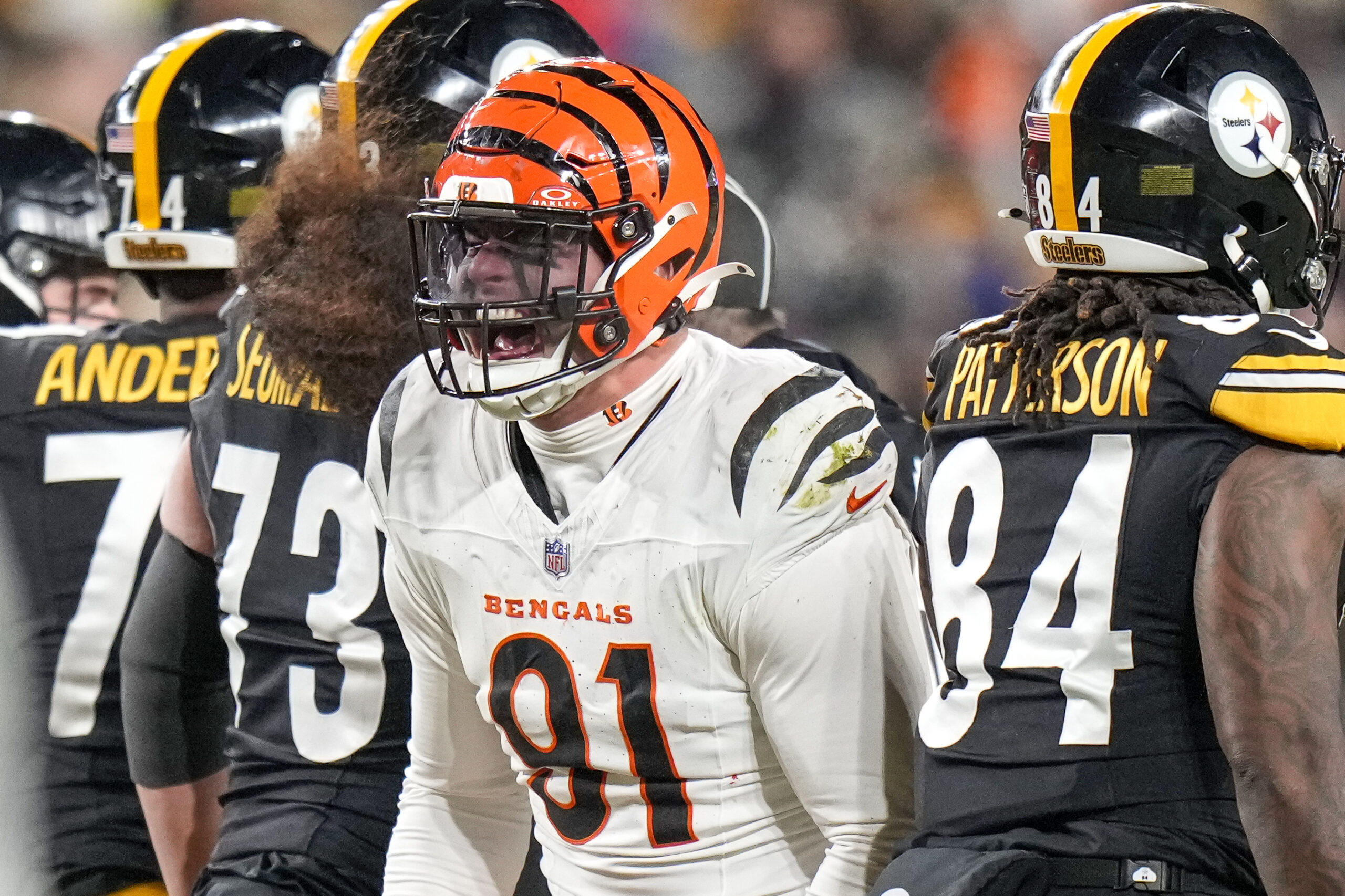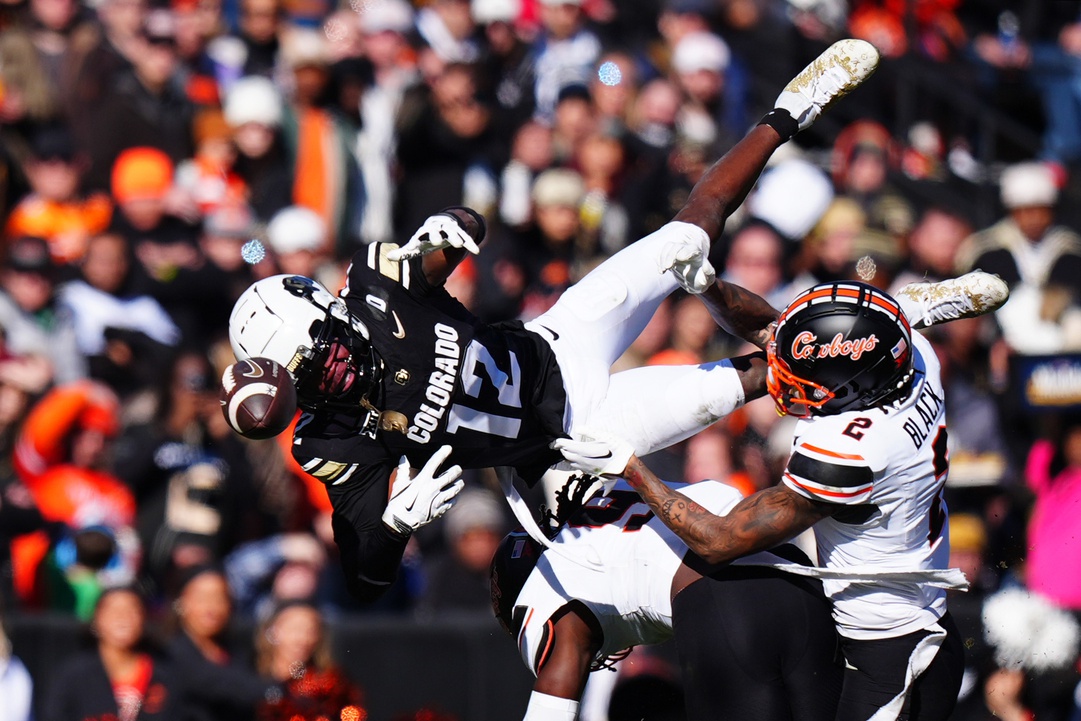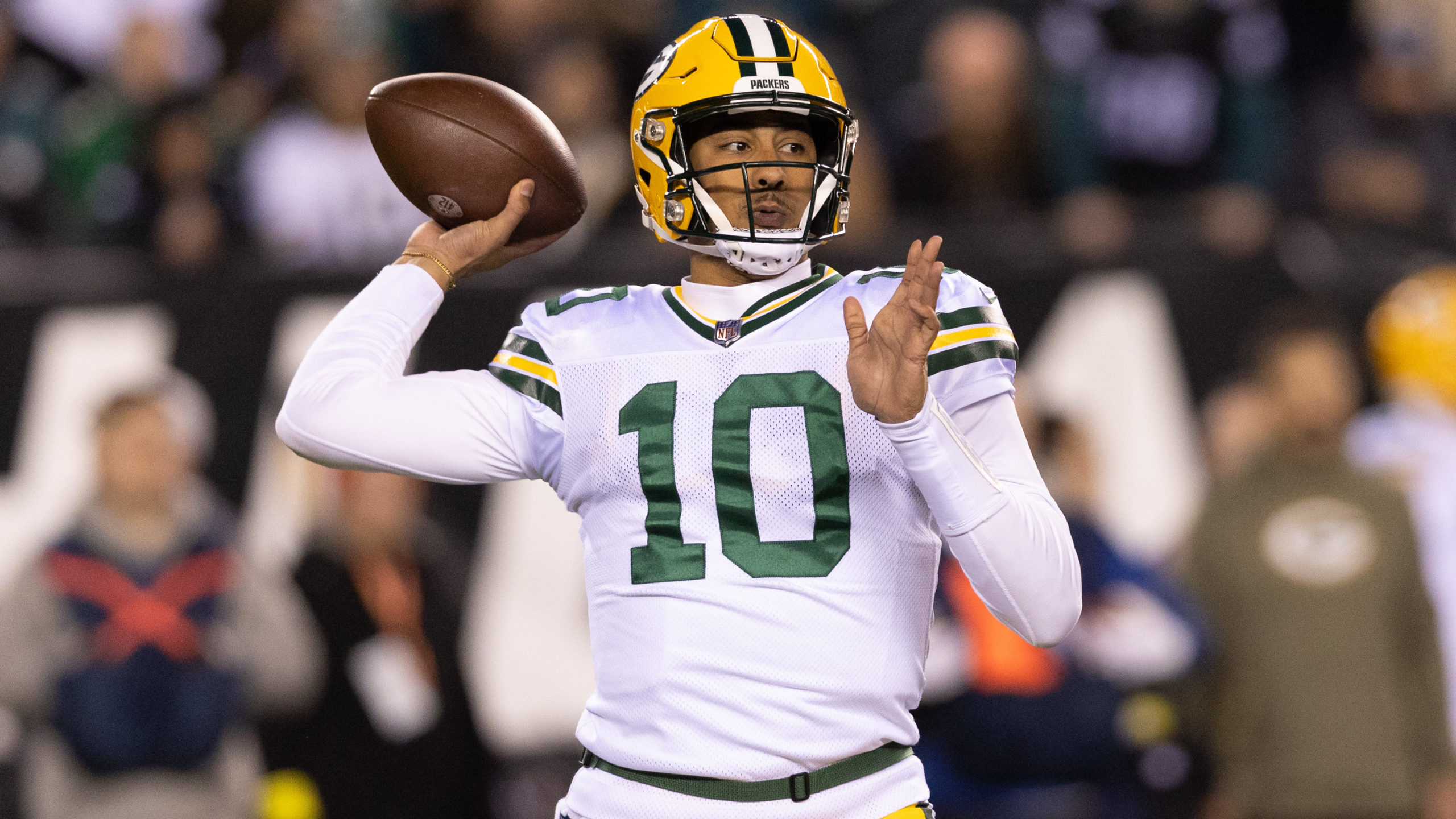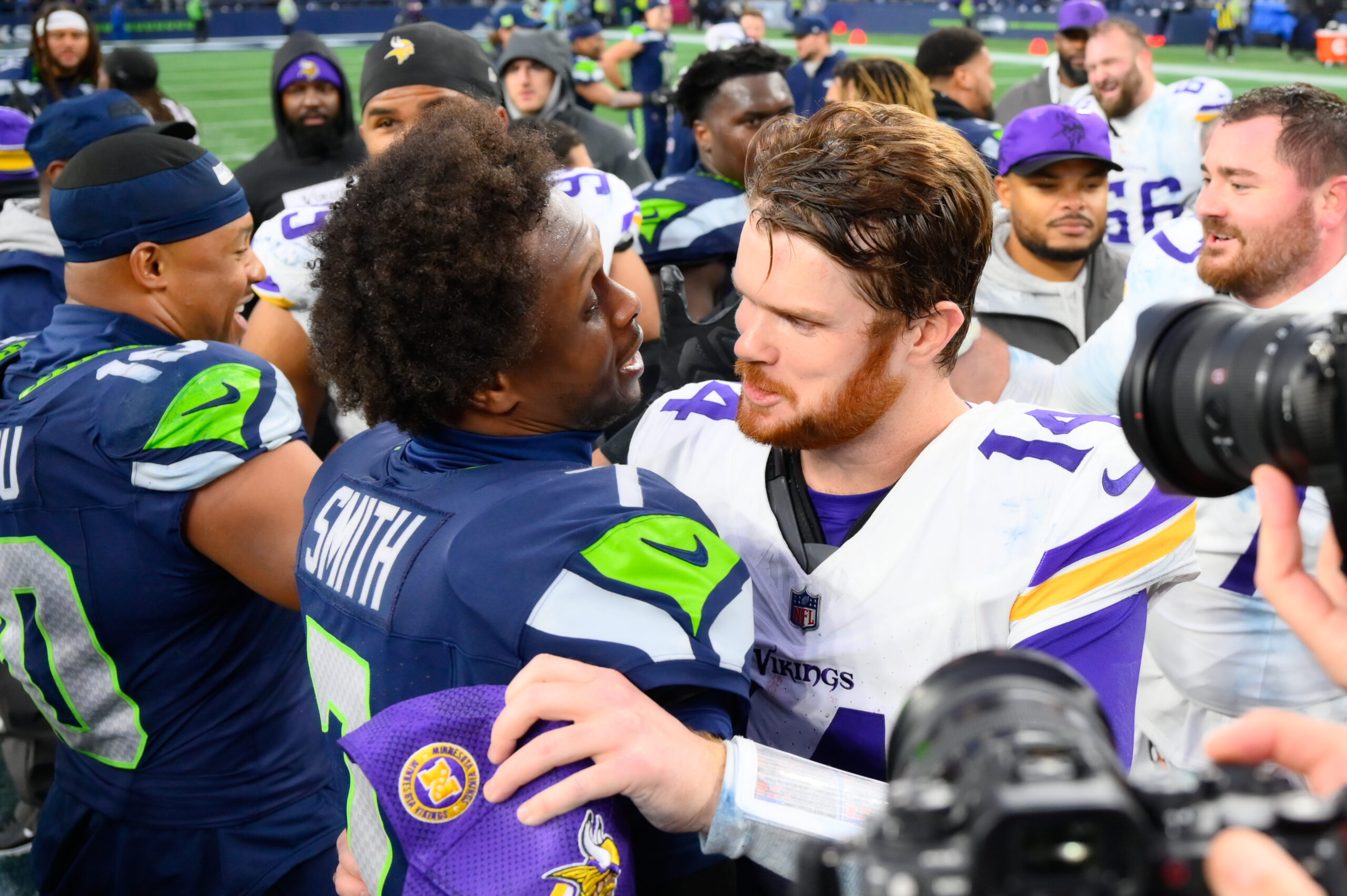NFL Analysis
11/22/24
15 min read
Four Ups, Four Downs: Daniel Jones Release, JSN Usage, Drake Maye's Footwork
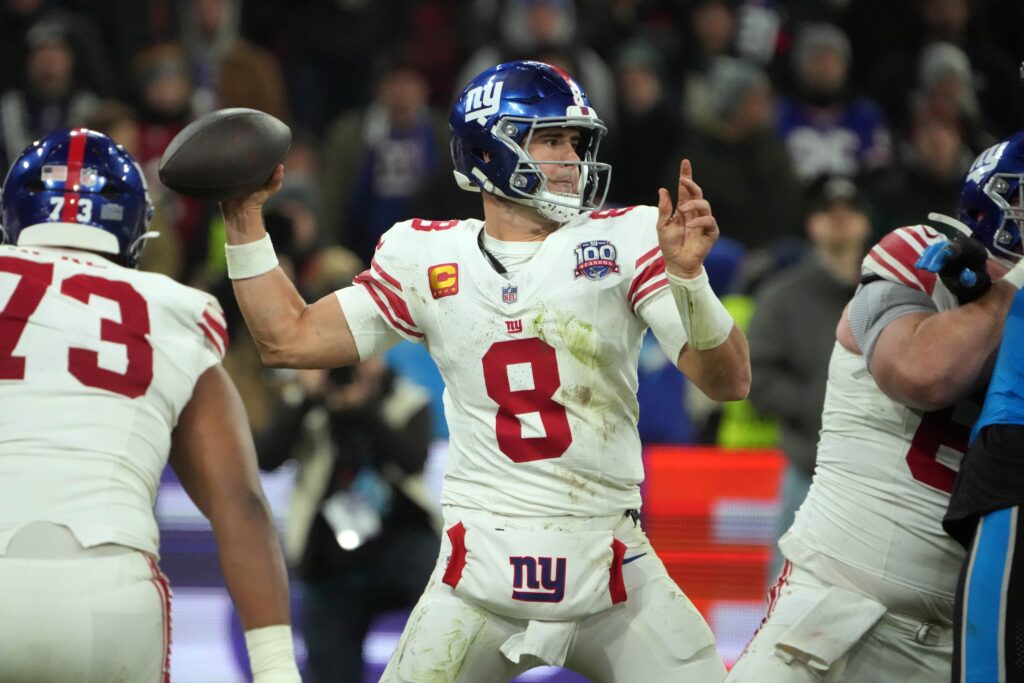
Welcome to Four Ups, Four Downs. This week, we’ll look at the Daniel Jones situation, more receiver usage, and some good and bad linebacker play around the league.
All stats courtesy of TruMedia.
Up: The Daniel Jones release is best for everyone
Everything about the Daniel Jones era with the New York Giants could be a “down” but we’ll keep this as an “up” because of the quick decision to fully part ways. After the Giants announced Jones would no longer be the starter, Jones went to ownership on Friday morning and asked for a release that was granted.
Moving on from Jones now allows the quarterback to find a new team for the end of the season and eliminates the awkwardness of him still being in the Giants’ building through the end of the year. As the third-string quarterback, Jones was playing scout team safety at practice on Thursday.
By releasing Jones now, the Giants get ahead of what would have been an inevitable move in the offseason. There’s been some talk of how the Giants could have designated Jones as a post-June 1 cut at the end of the season to spread his $22 million in dead money over two seasons. But who cares? The Giants are still going to be rebuilding in 2025 and taking the full $22 million hit in 2025 is $19 million less than if Jones was on the roster. This cleans the cap of Jones’s deal completely for 2026 and the Giants will have that extra $19 million of cap space to use at the start of the 2025 offseason instead of having to wait until June.
The Jones era never clicked with the Giants, pairing a quarterback who could not raise the quality of the offense with one of the worst supporting casts in the league. Jones often compounded the weaknesses along the offensive line with poor pocket presence that invited more pressure and sacks.
His productive 2022 season was a well-schemed plan from Brian Daboll that often got Jones moving outside of the pocket to take advantage of his mobility and away from potential pressure. Yet after that season, the Giants decided to pass on tagging Jones, placing the tag on Saquon Barkley instead, and signed the quarterback to a $140 million deal over five years.
With the tag, the Giants would not have had any financial obligation to move on from Jones after the 2023 season. There was already a willingness to do so for the Giants, showcased on the offseason version of HBO's Hard Knocks in which the front office attempted to move up in the draft for Jayden Daniels and Drake Maye.
Jones lasted less than two seasons on his extension and the only qualified quarterbacks with worse EPA per play over that time are Desmond Ridder, Mac Jones, and Bryce Young.
With the release, Jones is set to hit waivers but his contract will prevent any team from wanting to take that on. That will make him a free agent on Monday. Jones could be a preferred backup for a team that needs experience there with his mobility playing as a bigger threat off the bench than something to build an offense around. A smart team could be more likely to do this because if Jones gets signed in the offseason, the team he ended 2024 with would be in line for any potential comp pick that comes from his deal.
He could find a path as a bridge quarterback — he’ll be up against Sam Darnold and Russell Wilson as expected 2025 free agents — but as a good dude, by all accounts, he’ll, at worst, have the chance to serve a long time as a backup around the league.
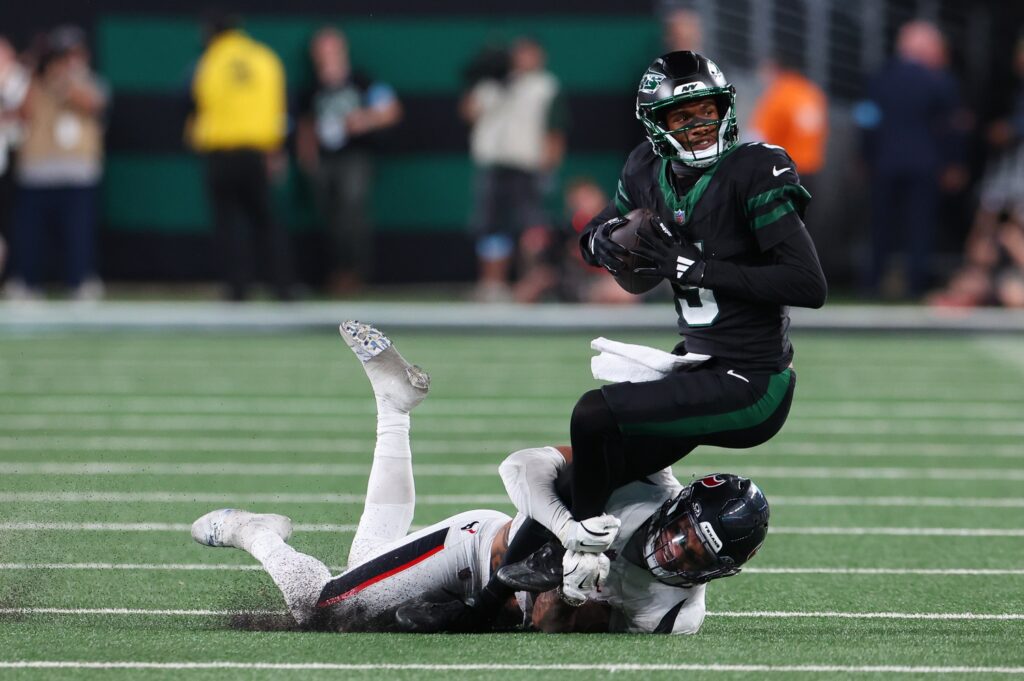
Down: Keeping Garret Wilson Outside
When the Jets traded for Davante Adams, one of the thoughts was that things would improve for Garrett Wilson. With Adams sliding in as a de facto No. 1 receiver, Wilson would get more opportunities against No. 2 corners and his production could improve. That hasn’t really happened.
Before the Adams trade, Wilson averaged 1.63 yards per route run which ranked 52nd among receivers despite the second-highest target share in the league. Since the trade, Wilson has 1.87 yards per route run, which is 45th as his target share has dropped from 30 to 25 percent.
That looks like a per-route improvement on the surface but that’s not quite accurate. So much of that bump in yards per route run has come from the slot, where Wilson has averaged an impressive 2.87 yards per route run, compared to 1.98 before the Adams trade. When lined up outside, Wilson had 1.39 yards per route pre-Adams and 1.40 with him.
Yet despite the chance to move Wilson around more often with Adams taking over as Aaron Rodgers’s favored receiver, Wilson has played more often on the outside than he did before the trade — 77.4 percent of his snaps to 72.7 percent — while Adams has taken a 50-50 split between the outside and slot.
For an offense that needs to find as many easy answers as possible, what’s better than getting Wilson matched up against a slot corner or running past a linebacker as he did here as the inside receiver in a 3x1?
— Dan Pizzuta (@DanPizzuta) November 22, 2024
Adams has a nearly identical 1.67 yards per route run from the outside and 1.68 from the slot. The Jets could keep catering to the older players in a lost season or find out how to get the most out of the younger players who will be the core of the roster in the future.
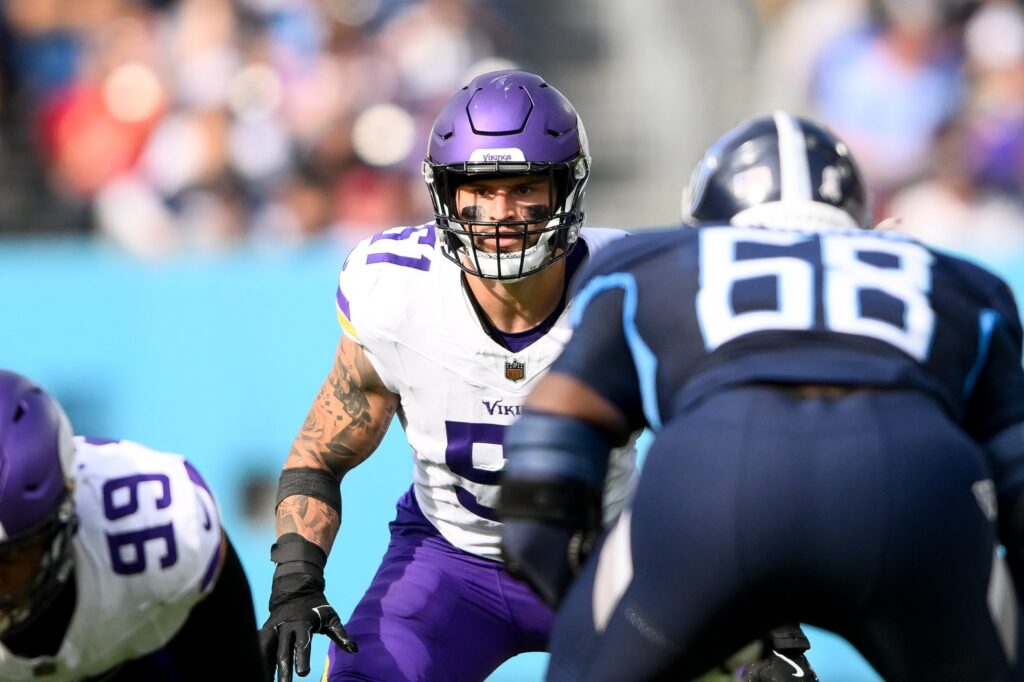
Up: Blake Cashman’s Return
The Minnesota Vikings defense is filled with role players placed in the ideal situation to get the most out of their skill sets. One of those players is linebacker Blake Cashman. After three years with the Jets and two with the Texans, only one of which he was a starter, Cashman signed a three-year/$22 million contract to play under Brian Flores this past offseason.
He’s been a perfect fit from the start on a defense that weaponizes linebackers with their positioning. Cashman flashed during the first five weeks of the season but suffered a tuf tow injury that kept him out of the lineup for three weeks. He returned in Week 10 against the Jaguars and his impact has been felt during the past two games.
Cashman has been a key piece to the Vikings’ pre-snap looks that often build off the double-mug looks that have the off-ball linebackers start at the line of scrimmage. With Cashman, those looks can turn into anything.
Despite missing three weeks, Cashman is still fourth in coverage snaps that start from a DT alignment, according to Next Gen Stats. That obviously doesn’t mean he’s lined up as a defensive tackle, but that’s how NGS labels alignments on the line of scrimmage between the guards.
Anyway, on those snaps, Cashman has seen five targets and allowed two receptions for 33 yards. Overall, he’s fourth among linebackers in yards allowed per coverage snap and has only allowed a 60.9 percent completion percentage, the second-best for linebackers.
When he lines up on the line of scrimmage, Cashman can go anywhere. He has the ability to drop into coverage but he can also rush the passer. He has a 21 percent blitz rate but because he drops back so often, defenses aren’t always prepared for it.
Down: Where Baker Can Still Get Got
This is the best version of Baker Mayfield we’ve seen. Offensive coordinator Liam Coen has pressed all the right buttons in constructing the passing offensive in Tampa Bay, getting the most out of Mayfield’s strengths and avoiding the spots where Mayfield tends to get himself into trouble. We touched on this a bit last week with Tampa’s screen game.
But there’s still an area where Mayfield hasn’t completely clicked and that’s when targeting the intermediate level of the field, between 11 and 19 air yards. Mayfield is one of four quarterbacks with negative EPA when throwing to that level of the field. His has nine interceptions this season and six have been on intermediate throws. Those six interceptions to that level are tied for the most in the league.
The place of concern on those throws is when Mayfield is late to the outside. Mayfield has a strong arm but doesn’t have the type of velocity that allows him to be late on those kinds of throws like some other rocket-armed quarterbacks can get away with. Look at where Mayfield has thrown his interceptions and you can see where the issue lies.
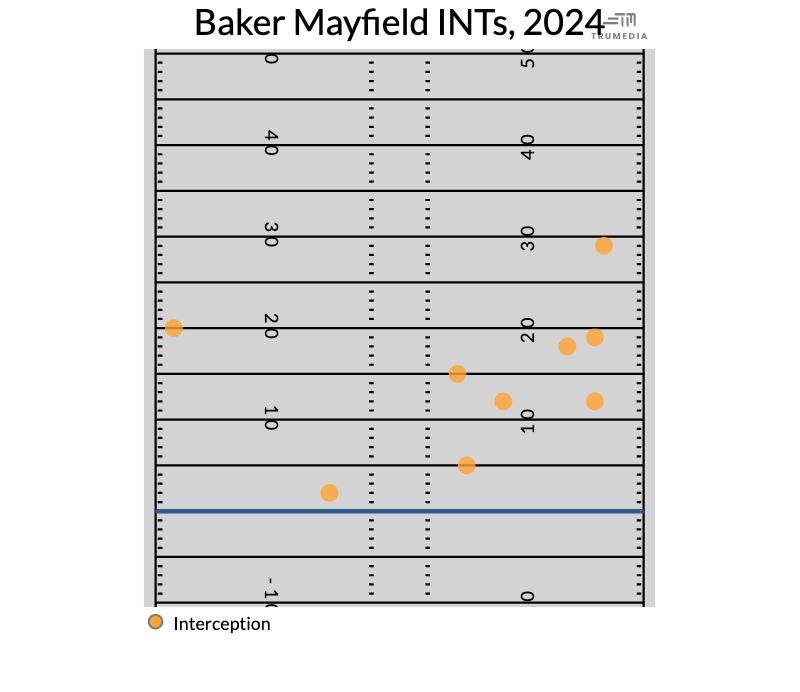
On three of his six intermediate interceptions, Mayfield failed to account for an underneath defender who was able to cut in on the passing lane. On two others, Mayfield threw a deep defender into the play with an overthrow. The other was a tipped pass off his receiver.
For an offense that’s going to need to eliminate nearly all mistakes to go from 4-6 to a division winner (FTN has the Buccaneers with a 35.6 percent chance to make the playoffs), this is a place that still causes some trouble in an otherwise impressive season from Mayfield as a passer.
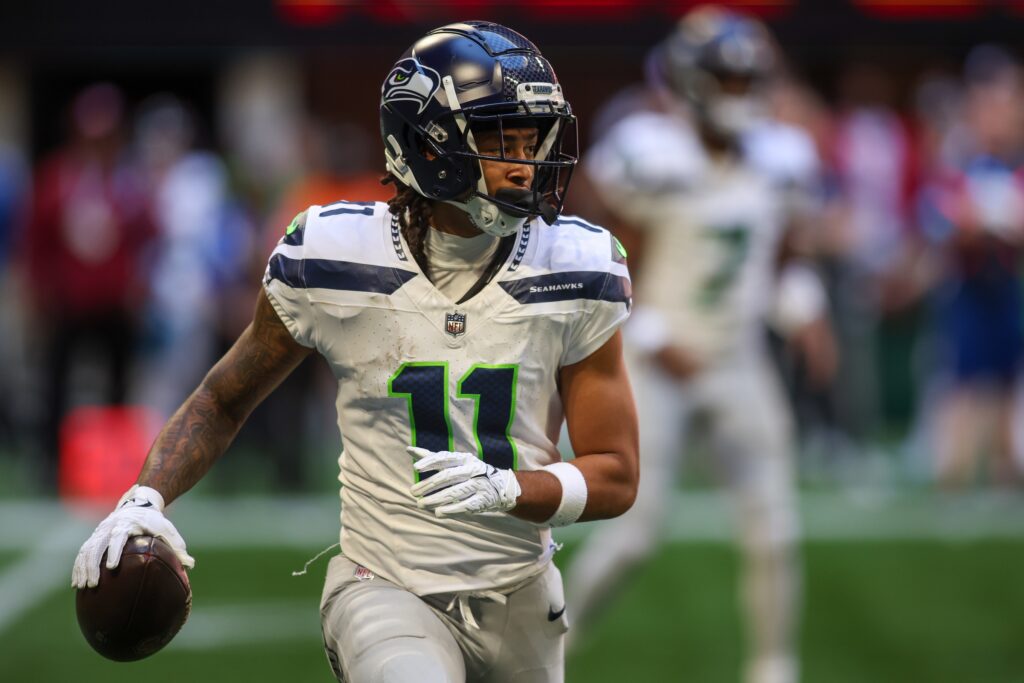
Up: The Seahawks Might Have Figured Out JSN
Since the Seahawks drafted Jaxon Smith-Njigba, they haven’t fully figured out how to use him with DK Metcalf and Tyler Lockett. Last year in Smith Njigba’s rookie season, the Seahawks used him as a low (emphasis on low) aDOT receiver who took screens and underneath passes.
Even earlier this season, there were some ups and downs in his production under new offensive coordinator Ryan Grubb. But during the past two weeks, Smith-Njigba has games of 180 and 110 yards. He’s seen 36.9 percent of Seattle’s targets in those games, which leads the league at that time (it goes back to Week 9 because Seattle had a Week 10 bye). Metcalf missed the Week 9 game but was back in Week 11.
The high volume has been helpful for JSN’s raw totals but there’s been a much better effort of getting him into space and designing plays to take advantage of his ability.
Against the 49ers, the Seahawks ran a play that had Smith-Njigba as the outside receiver in a trips bunch. Before the snap, Seattle motioned the running back to that side, which brought the linebacker (Fred Warner) out of the middle of the field and opened up space for a angle route from Smith-Njigba behind Seattle’s charging offensive line.
Against the Rams in Week 9, Smith-Njigba had five plays of 20 or more yards. One was a similar look to that 49ers play with JSN motioning tight before running a slant behind the offensive line getting in front. Another came with him as the No. 2 on the trips side in empty, running a scissors concept with the No. 3.
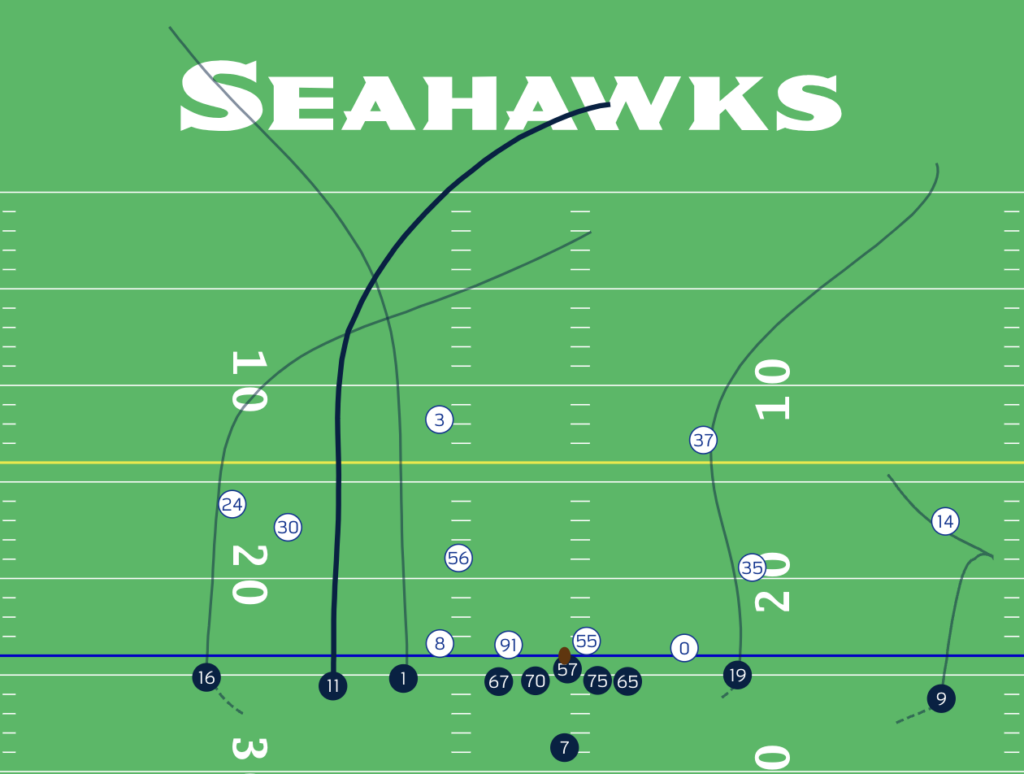
If Seattle can build off these explosive plays — and have time for them to develop — the Seahawks could be onto something with the second-year receiver.
Down: Run Play-Action On The Jaguars
When the Jaguars hired Ryan Nielsen as the defensive coordinator, there was optimism that even if there wasn’t a ton of high-end talent on the roster, the execution would be improved. That’s what happened with the Falcons, when Neilsen tried a lot of stuff to make up for a non-existent pass rush.
The Jaguars' defense has left a lot to be desired in both talent and execution this season. There might not be a place where that’s been more apparent than at linebacker. Jacksonville has continually tried to invest in the position, only to underwhelm at that spot. Foye Oluokun has been the best hit, but he’s missed some time this season.
At their best, the Jacksonville linebackers can be aggressive downhill players and that can and has been exposed when opposing offenses use play-action against them. The Jaguars are 32nd in EPA per play and 31st in success rate against play-action this season while no team has seen more play-action passes run against them.
The linebackers flow so aggressively to the run that it leaves voids all over the middle of the field. An extreme example is this throw to Jameson Williams when the Jaguars played the Lions in Week 11.
The Jaguars are allowing 112.4 yards per game off of play-action this season. If that holds, they would be the only team outside of the 2021 Jets (114.5) to allow over 100 yards per game off play-action over the past five years.

Up: Drake Maye’s Footwork is a positive
Draft season is a time for opinions to be shared and opinions to be parrotted. One of the most echoed draft takes came on Drake Maye’s footwork. The idea was the footwork was too inconsistent for Maye to have repeatable mechanics to deliver the ball accurately. He would also bail from the pocket and bring pressure on himself.
We’ve only gotten six starts from Maye and not only does it look like his footwork will not be a detrimental trait, it already looks like a positive. Maye still isn’t playing in ideal circumstances behind an offensive line that is 32nd in ESPN’s pass block win rate but he’s done more to mitigate the pressure than add to it this season.
Sometimes it can be subtle movement, like his reaction to a Rams blitz that created just enough space to get the throw off to a Demario Douglas crosser on third down. It’s drifting in the pocket for a purpose.
Drake Maye waits for the crosser to clear the dropping defender and gets the ball off as the blitzer closes to convert on 3rd down. pic.twitter.com/HBDOqPyhv5
— Nate Tice (@Nate_Tice) November 18, 2024
Maye has a lower pressure rate and pressure-to-sack rate than Jacoby Brissett did in his games as New England’s starter last season. He’s also processing quicker and creating more explosive plays through the air. Sometimes pressure can’t be avoided but where Maye’s footwork has come into play is avoiding unnecessary hits.
Brissett stood in the pocket and held onto the ball. That led to him taking a hit on 24.9 percent of his dropbacks, which was the second-highest rate in the league behind Deshaun Watson. Maye is 19th (15.2 percent), among 36 qualified quarterbacks, much closer to the middle and a significant improvement over Brissett.
Maye’s pocket inconsistencies were the concern for a low floor but those inconsistencies haven’t shown up. Creative throwers don’t always have to have the perfect robotic footwork on every dropback and Maye is already showing why.
Down: The Rams’ Interior Offensive Line
Part of the Rams’ turnaround last season was from a dominating interior offensive line that allowed the offense to shift from an outside run team to a power run game up the middle. The Rams doubled down on that shift in the offseason and signed Jonah Jackson to a three-year/$51 million contract. Jackson played guard in Detroit but, in a training camp shakeup, was expected to play center.
Few things about the Rams’ offensive line have gone as expected. They already have seven different line combinations that have played at least 20 snaps together. The most common lineup has played 186 snaps, 30 percent of the team’s offensive snaps.
Jackson, after missing time since Week 2, returned to the lineup in Week 10 but was benched in Week 11.
Meanwhile, the Rams still have the fourth-highest rate of inside runs (57 percent), per Next Gen Stats, but just 26th in yards per carry on those plays. They’re also 29th in the total number of runs that gained 10 or more yards on inside runs despite the 11th-most carries. The Rams are 30th in rushing yards over expectation (-69) on those runs.
This has slowed down much of the offense and put a lot more weight on the arm of Matthew Stafford (behind a line that also struggles to pass block). It’s also hindered the decision-making of the running backs. Some of those plays that were just cut-and-go last season have caused the backs to wait a little longer and the explosive run plays have not come through.
There’s been enough success to not completely derial the offense (the Rams are ninth in rushing success rate) but that’s also because the Rams have picked their spots wisely with the seventh-highest early-down pass rate in the league.
If the Rams can make a run during this final stretch of the season, the passing offense is going to be the season but figuring out the interior line for both pass protection and keeping that run game afloat will be a necessity.


